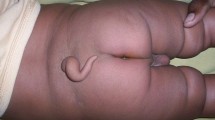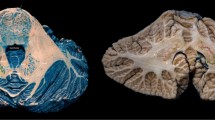Abstract
Purpose
This study focused on the detailed structure of microvessels of the neurotransmitter-positive vasa nervorum of the inferior alveolar nerve, vein, and artery in the mandibular canal (MC) to obtain information for improved safety in dental treatments. We also observed the detailed structure of the MC from the mental foramen to the mandibular foramen using cone-beam computed tomography (CBCT).
Methods
In this study, mandibles from 45 sides of 23 human cadavers aged 76–104 years were examined by microscopy, immunohistochemistry, and CBCT analysis. These data were further evaluated by principal component analysis (PCA).
Results
The microvessels of the vasa nervorum with calcitonin gene-related peptide- and neuropeptide Y-positive reactions were classified into 5 types: large (4.19%, 28/667); irregular large (7.35%, 49/667), numerous intermediate (29.23%, 195/667), irregular intermediate (29.23%, 195/667), and scattered fine (30.0%, 200/667) microvessels. The MC showed various structures from the 3rd molar to the premolars and was also classified into three types, including complete (57.0%, 228/400), partial (33.8%, 135/400), and unclear (9.2%, 37/400), from the mandibular foramen to the mental foramen. PCA results revealed that developed capillaries were mainly localized in the molar region.
Conclusions
Fine microvessels of the vasa nervorum expressing neurotransmitters are present from the molar to premolar region, which is key information for mandibular dental treatments. The different microvessel structures also indicate differences in specific characteristics between dentulous and edentulous cadavers regarding oral surgical and implant treatments.






Similar content being viewed by others
Data availability
The datasets generated and analyzed during the current study are available from the corresponding author on reasonable request.
References
Al OK, Salti L (2011) Postinsertion pain in region of mandibular dental implants: a case report. Implant Dent 20:27–31. https://doi.org/10.1097/ID.0b013e3182096c94
Anderson LC, Kosinski TF, Mentag PJ (1991) A review of the intraosseous course of the nerves of the mandible. J Oral Implantol 17:394–403
Bar ZJ, Slasky BS (1997) CT imaging of mental nerve neuropathy: the numb chin syndrome. AJR Am J Roentgenol 168:371–376. https://doi.org/10.2214/ajr.168.2.9016210
Baraniuk JN, Kaliner MA (1990) Neuropeptides and nasal secretion. J Allergy Clin Immunol 86:620–627. https://doi.org/10.1016/s0091-6749(05)80226-x
Bjurholm A, Kreicbergs A, Terenius L, Goldstein M, Schultzberg M (1988) Neuropeptide Y-, tyrosine hydroxylase- and vasoactive intestinal polypeptide-immunoreactive nerves in bone and surrounding tissues. J Auton Nerv Syst 25:119–125. https://doi.org/10.1016/0165-1838(88)90016-1
Chen SY, Qin JJ, Wang L, Mu TW, Jin D, Jiang S, Zhao PR, Pei GX (2010) Different effects of implanting vascular bundles and sensory nerve tracts on the expression of neuropeptide receptors in tissue-engineered bone in vivo. Biomed Mater 5:055002. https://doi.org/10.1088/1748-6041/5/5/055002
Chi AC, Carey J, Muller S (2003) Intraosseous schwannoma of the mandible: a case report and review of the literature. Oral Surg Oral Med Oral Pathol Oral Radiol Endod 96:54–65. https://doi.org/10.1016/S1079-2104(03)00228-2
Dožić A, Cetković M, Marinković S, Mitrović D, Grujičić M, Mićović M, Milisavljević M (2014) Vascularisation of the geniculate ganglion. Folia Morphol (Warsz) 73:414–421. https://doi.org/10.5603/FM.2014.0063
Elisková M (1973) Blood vessels of the ciliary ganglion in man. Br J Ophthalmol 57:766–772. https://doi.org/10.1136/bjo.57.10.766
Fujita H, Kokubun N, Sada T, Nagashima T, Komagamine T, Kawabe K, Hirata K (2015) Demyelinating hypertrophic inferior alveolar nerve mimicking a nerve tumor. Intern Med 54:1109–1111. https://doi.org/10.2169/internalmedicine.54.3512
Gu L, Zhu C, Chen K, Liu X, Tang Z (2018) Anatomic study of the position of the mandibular canal and corresponding mandibular third molar on cone-beam computed tomography images. Surg Radiol Anat 40:609–614. https://doi.org/10.1007/s00276-017-1928-6
Guo Y, Chen H, Jiang Y, Yuan Y, Zhang Q, Guo Q, Gong P (2020) CGRP regulates the dysfunction of peri-implant angiogenesis and osseointegration in streptozotocin-induced diabetic rats. Bone 139:115464. https://doi.org/10.1016/j.bone.2020.115464
Hara IF, Amizuka N, Ozawa H (1996) Immunohistochemical and ultrastructural localization of CGRP-positive nerve fibers at the epiphyseal trabecules facing the growth plate of rat femurs. Bone 18:29–39. https://doi.org/10.1016/8756-3282(95)00425-4
Hoyle CH, Stones RW, Robson T, Whitley K, Burnstock G (1996) Innervation of vasculature and microvasculature of the human vagina by NOS and neuropeptide-containing nerves. J Anat 188:633–644
Imai S, Matsusue Y (2002) Neuronal regulation of bone metabolism and anabolism: calcitonin gene-related peptide-, substance P-, and tyrosine hydroxylase-containing nerves and the bone. Microsc Res Tech 58:61–69. https://doi.org/10.1002/jemt.10119
Kalabalik F, Aytuğar E (2019) Localization of the Mandibular canal in a Turkish population: a retrospective cone-beam computed tomography study. J Oral Maxillofac Res 10:e2. https://doi.org/10.5037/jomr.2019.10202
Kim ST, Hu KS, Song WC, Kang MK, Park HD, Kim HJ (2009) Location of the mandibular canal and the topography of its neurovascular structures. J Craniofac Surg 20:936–939. https://doi.org/10.1097/SCS.0b013e3181a14c79
Kondo M, Kondo H, Miyazawa K, Goto S, Togari A (2013) Experimental tooth movement-induced osteoclast activation is regulated by sympathetic signaling. Bone 52:39–47. https://doi.org/10.1016/j.bone.2012.09.007
Kqiku L, Weiglein AH, Pertl C, Biblekaj R, Städtler P (2011) Histology and intramandibular course of the inferior alveolar nerve. Clin Oral Investig 15:1013–1016. https://doi.org/10.1007/s00784-010-0459-x
Long HQ, Xie WH, Chen WL, Xie WL, Xu JH, Hu Y (2014) Value of micro-CT for monitoring spinal microvascular changes after chronic spinal cord compression. Int J Mol Sci 7:12061–12073. https://doi.org/10.3390/ijms150712061
Lyon MJ (2000) Nonadrenergic innervation of the rat laryngeal vasculature. Anat Rec 259:180–188. https://doi.org/10.1002/(SICI)1097-0185(20000601)259:2%3C180::AID-AR8%3E3.0.CO;2-T
Morikawa M, Sato S, Numaguchi Y, Mihara F, Rothman MI (1996) Spinal epidural venous plexus: its MR enhancement patterns and their clinical significance. Radiat Med 14:221–227
Mortazavi H, Baharvand M, Safi Y, Dalaie K, Behnaz M, Safari F (2019) Common conditions associated with mandibular canal widening: a literature review. Imaging Sci Dent 49:87–95. https://doi.org/10.5624/isd.2019.49.2.87
Narayana K, Vasudha S (2004) Intraosseous course of the inferior alveolar (dental) nerve and its relative position in the mandible. Indian J Dent Res 15:99–102
Stjärne P (1991) Sensory and motor reflex control of nasal mucosal blood flow and secretion; clinical implications in non-allergic nasal hyperreactivity. Acta Physiol Scand 600:1–64
Takiguchi M, Sato I, Li ZL, Miyaso H, Kawata S, Itoh M (2021) Characteristics of mandibular canal branches related to nociceptive marker. J Dent Res 100:623–630. https://doi.org/10.1177/2F0022034520979639
Vartiainen VM, Siponen M, Salo T, Rosberg J, Apaja SM (2008) Widening of the inferior alveolar canal: a case report with atypical lymphocytic infiltration of the nerve. Oral Surg Oral Med Oral Pathol Oral Radiol Endod 106:e35-39. https://doi.org/10.1016/j.tripleo.2008.05.063
Xu J, Wang J, Chen X, Li Y, Mi J, Qin L (2020) The effects of calcitonin gene-related peptide on bone homeostasis and regeneration. Curr Osteoporos Rep 18:621–632. https://doi.org/10.1007/s11914-020-00624-0
Yokomizo A, Takatori S, Hashikawa HN, Goda M, Kawasaki H (2015) Characterization of perivascular nerve distribution in rat mesenteric small arteries. Biol Pharm Bull 38:1757–1764. https://doi.org/10.1248/bpb.b15-00461
Zukowska Z, Pons J, Lee EW, Li L (2003) Neuropeptide Y: a new mediator linking sympathetic nerves, blood vessels and immune system? Can J Physiol Pharmacol 81:89–94. https://doi.org/10.1139/y03-006
Acknowledgements
The authors sincerely thank those who donated their bodies to science so that anatomical research could be performed. The results from such research can potentially increase mankind’s overall knowledge, which can then improve patient care. Therefore, these donors and their families deserve our highest gratitude. The authors also thank Dr R. Asaumi (Nippon Dental University, Department of Oral and Maxillofacial Radiology) for providing CBCT data for this study.
Funding
The authors declared that this study had received no financial support.
Author information
Authors and Affiliations
Contributions
MT was responsible for protocol, data collection, data analysis, and manuscript writing/editing. IS was responsible for protocol, data analysis, and manuscript writing/editing. YU and SK were involved in data collection and data analysis. YN contributed to data analysis. TY and Z-LL contributed to data analysis and manuscript editing. MI performed supervision and manuscript editing.
Corresponding author
Ethics declarations
Conflict of interest
The authors declare that they have no competing interests.
Ethical approval
This study was performed in compliance with the principles of the Declaration of Helsinki (as revised in 2013). The cadavers used in the present study were donated to Tokyo Medical University and Nippon Dental University, Tokyo, Japan, based on the Act on Body Donation for Medical and Dental Education. This study was approved by the Ethics Review Committee of Nippon Dental University (2018/21/July; No. NDU-T2015-20) and Tokyo Medical University, Institutional Review Board (2019/01/March; TMU, No. T2018-0060).
Informed consent
All the donors willingly signed a consent form for body donation for education and research, and all the donors could revoke their intended donations at any time without any disadvantages. The collection and use of the CBCT data of all the cadavers was carried out with the permission of the donors and their families and then performed according to the Law Concerning Cadaver Dissection and Preservation enacted in Japan in 1949.
Consent to participate
The present study was conducted within the parameters of the written permission we received from the body donors during their lifetime.
Consent for publication
All the authors have read and agreed to the published version of the manuscript.
Additional information
Publisher's Note
Springer Nature remains neutral with regard to jurisdictional claims in published maps and institutional affiliations.
Rights and permissions
Springer Nature or its licensor (e.g. a society or other partner) holds exclusive rights to this article under a publishing agreement with the author(s) or other rightsholder(s); author self-archiving of the accepted manuscript version of this article is solely governed by the terms of such publishing agreement and applicable law.
About this article
Cite this article
Takiguchi, M., Sato, I., Ueda, Y. et al. Structural and CBCT analysis of mandibular canal microvessels expressing neurotransmitters in human cadavers. Surg Radiol Anat 45, 975–987 (2023). https://doi.org/10.1007/s00276-023-03184-x
Received:
Accepted:
Published:
Issue Date:
DOI: https://doi.org/10.1007/s00276-023-03184-x




